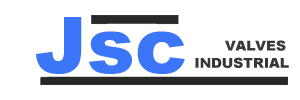Introduce Sealing Mechanism of Trunnion Mounted Ball Valves
On this page
Trunnion mounted ball valves are widely used in high-pressure and large-diameter applications due to their stable structure and reliable sealing capabilities, making them highly favored in various industrial sectors. Based on the installation method of the valve seat sealing ring, trunnion mounted ball valves can be categorized into two structural types: front-sealed and back-sealed. These designs not only influence the valve's sealing performance but also determine their suitability for different working conditions.
Front-sealed trunnion mounted ball valves utilize a unique sealing principle. The ball can freely rotate within upper and lower sliding bearings or roller bearings. The valve seat sealing ring is installed in a movable sleeve, which is sealed with the valve body through an O-ring. The valve seat sealing ring is pre-loaded by a set of springs to ensure reliable sealing.
When the valve is closed, the medium pressure acts on the sealing surface of the inlet valve seat, pressing the valve seat against the ball to achieve sealing. This design ensures unidirectional sealing performance: the inlet valve seat provides sealing while the outlet valve seat does not play a role in sealing during this process. When the medium is pressurized in the reverse direction, the function of the valve seat changes, maintaining reliable sealing performance.
Reliable Sealing Performance: The medium pressure, combined with the spring and movable sleeve acting on the valve seat sealing ring, ensures the sealing performance of the valve.
Reduced Internal Pressure Impact: When closed, the packing and most of the valve body are not subjected to internal pressure, which is crucial for extending the valve's service life.
Prevents Liquid Accumulation: In the closed state, no liquid accumulation area is formed on the pressurized side of the valve, making it suitable for systems with corrosive and cryogenic liquids.
High Operating Torque: Due to the sealing structure design, the ball requires a larger torque during operation.
Increased Bearing Load: As the effective area under medium pressure increases, the load on the trunnion bearings increases, potentially affecting the long-term operational stability of the valve.
Back-sealed trunnion mounted ball valves have different structural characteristics. The core of this design is that the sealing is achieved by the valve seat installed in the flow direction of the medium. Compared to the front-sealed structure, the back-sealed design effectively reduces the load on the ball support bearings, thereby lowering the operating torque.
In the closed state, the front valve seat is pushed away from the ball due to the medium pressure, so it does not contribute to sealing. Instead, the medium pressure pushes the back valve seat against the ball, ensuring reliable sealing. To ensure proper operation of this structure, the sealing diameter of the back valve seat should be smaller than the average diameter of the valve seat, and the inner diameter of the valve seat should be larger than the bore diameter of the ball.
Low Bearing Load: The floating sleeve design results in lower bearing loads and friction torque, helping to reduce operating costs.
Reduced Torque: The back-sealed design reduces operating torque, making it particularly suitable for applications requiring frequent operation.
Larger Structural Size: To ensure reliable sealing, the size of the ball and valve body needs to be appropriately increased, which may impose installation space requirements.
Dual-sealed trunnion mounted ball valves feature both front and back sealing capabilities. This design allows the valve to maintain sealing on both sides, providing enhanced reliability. This type of design is suitable for applications with stringent sealing requirements, such as the transportation of hazardous media.
Superior Sealing Performance: The dual-sealed design ensures reliable sealing performance in either direction.
Suitable for High-Pressure Environments: In high-pressure applications, the dual-sealed design provides additional safety, preventing leakage due to single-side seal failure.
Inability to Auto-Relieve Pressure: This structure cannot automatically relieve pressure if the pressure inside the valve body rises abnormally. Therefore, additional safety measures are required when transporting high-risk media such as liquefied gases.
Different types of trunnion mounted ball valves are suitable for various application scenarios. Choosing the appropriate valve structure based on specific working conditions can effectively improve system safety and operational efficiency.
Back-Sealed Valve Seats: Suitable for fluid pressure applications with PN ≥16MPa and valve diameters ranging from DN 80 to 200 mm, especially for conditions requiring frequent operation and low operating torque.
Front-Sealed Valve Seats: Suitable for transporting corrosive media and gases with pressure up to PN ≤ 10MPa, especially in applications with larger valve diameters.
Dual-Sealed Valves: Ideal for applications requiring extremely strict sealing or handling hazardous media. To enhance sealing performance, a grease sealing structure can be added to the valve seat as an auxiliary or emergency measure.
Trunnion mounted ball valves are extensively used in industrial sectors due to their excellent sealing performance and diverse structural options. Selecting the appropriate sealing structure based on actual needs not only ensures the safety and reliability of the system but also effectively extends the service life of the valve. Whether in high-pressure environments or for transporting corrosive media, trunnion mounted ball valves provide outstanding solutions.

